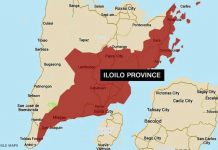ILOILO – The Provincial Disaster Risk Reduction and Management Council (PDRRMC) has passed a resolution recommending that Iloilo be declared under a state of calamity due to a significant rise in dengue cases.
The latest data from the Provincial Health Office reveal an escalation in cases, with 4,595 reported as of August 10, 2024, including 10 deaths.
This marks a 320 percent increase from last year during the same period, which recorded 1,095 cases and a single fatality.
The decision to recommend declaring a state of calamity was made during a special meeting at the Casa Real de Iloilo yesterday afternoon, as confirmed by Cornelio Salinas, the head of the Provincial Disaster Risk Reduction and Management Office.
According to Salinas, Iloilo has met the criteria set by the National Disaster Risk Reduction and Management Council (NDRRMC) for such a declaration.
The criteria include an extremely high incidence of a communicable disease affecting multiple areas and the presence of health events beyond normal expectancy.
Currently, three areas — Passi City and the municipalities of Miag-ao, and Tigbauan — have already declared local states of calamity, while Badiangan has reported a dengue outbreak.
Dengue fever, transmitted by the bite of an Aedes mosquito infected with a dengue virus, causes flu-like symptoms including severe headache, pain behind the eyes, muscle and joint pains, and rash.
More severe forms can develop into dengue hemorrhagic fever, which can be fatal.
The spread of dengue has prompted 41 of the 43 local government units in Iloilo, with the exception of Banate and Tubungan, to exceed the epidemic threshold necessitating urgent responses.
Additionally, 36 municipalities have observed clusters of cases across various barangays.
The PDRRMC’s resolution will now proceed to the Sangguniang Panlalawigan for official approval and declaration.
Gov. Arthur Defensor Jr. confirmed on Wednesday that the province has surpassed both alert and epidemic thresholds, indicating an ongoing outbreak and necessitating elevated alertness and coordinated response efforts.
In response to the crisis, the Provincial Disaster Risk Reduction and Management Operations Center (PDRRMOC) has been placed on blue alert status 24/7, tasked with intensifying monitoring, consolidating data, and ensuring timely communication with relevant agencies.
Data from the Provincial Health Office showed Passi City with the most cases of dengue at 344 with one death.
Next to Passi with the most cases are Oton (233 cases), Dingle (210 cases with one death), Lambunao (201 cases with one death), Dumangas (187), Calinog (183), Barotac Nuevo (172 cases with one death), Janiuay (164), Badiangan (161 cases with two deaths), and San Dionisio (144).
The rest of cases are as follows: Cabatuan (132), Lemery (131), Miag-ao (128 cases with two deaths), Sara (128), Pototan (120), Pavia (117), Tigbauan (117), Barotac Viejo (115), Santa Barbara (103), Alimodian (103), Leon (100), Ajuy (87), Batad (85), Banate (80 cases with one death), San Enrique (78), San Miguel (77), Dueñas (75), Mina (73), Estancia (70), Igbaras (65), San Joaquin (65), Bingawan (62), Concepcion (61), Zarraga (59), Anilao (58), Balasan (57), Leganes (57), Maasin (57), Guimbal (47), Carles (39), Tubungan (31), San Rafael (19), and New Lucena (13).
The 10 dengue fatalities so far reported this year are the following:
* six years old, male from Miag-ao
* 16 years old, female from Miag-ao
* four years old, male from Lambunao
* 15 years old, male from Badiangan
* 20 years old, male from Badiangan
* 20 years old, male from Dingle
* eight years old, female from Igbaras
* 41 years old, female from Barotac Nuevo
* three years old, female from Banate
* 10 years old, male from Passi City./PN





